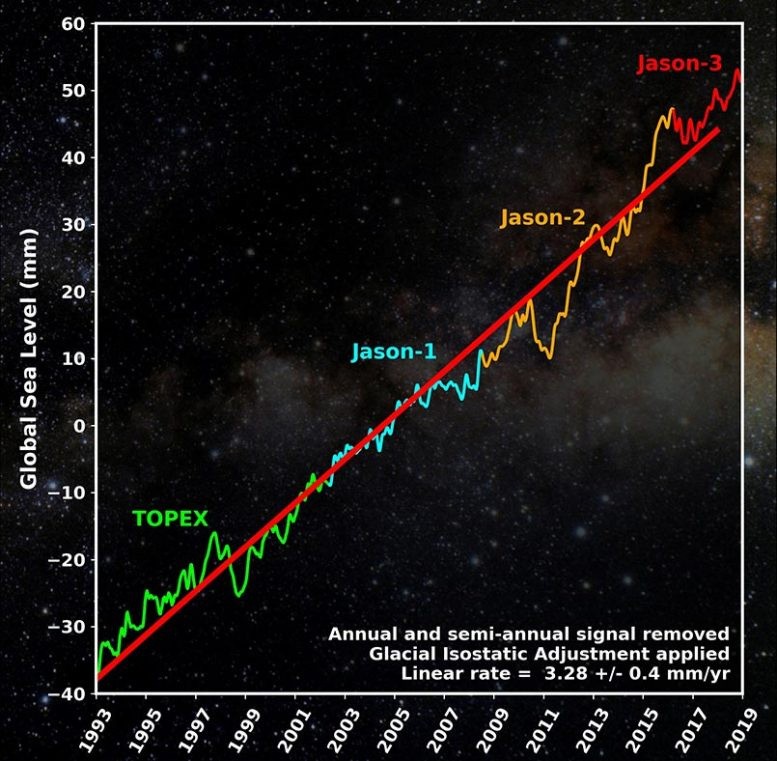
The Jason-2/Ocean Surface Topography Mission, or OSTM, has successfully ended its mission after 11 years in service. Jason-2/OSTM is a joint mission between NASA and several European partners, including France's Centre National d'Etudes Spatiales, or CNES, the National Oceanic and Atmospheric Administration, or NOAA, and the European Organisation for the Exploitation of Meteorological Satellites or EUMETSAT. OSTM was designed to monitor and measure global sea surface levels.
"[Jason-2's] 11-year lifetime in orbit was rewarding for the four program partners and the ocean and climate user community," said Alain Ratier, EUMETSAT's director–general. Jason-2's original mission duration was set for only three years, needless to say, it went above and beyond.
The decision to decommission Jason-2 comes by way of apparent deterioration in the satellite's power system. These deteriorations also inadvertently improved the quality of data being collected by Jason-2. When the deterioration was confirmed, mission officials decided to lower the orbit of the satellite to what is referred to as the "graveyard" orbit.
It turns out this was a great move on their part as resolution improved, allowing for better marine gravity studies and more precise mapping of seafloor topography. It also benefits operational oceanographic and science observations.

Global sea level has shown a steady rise since the early 1990s to present as measured by Jason-2/OSTM and its predecessors and successor from the early 1990s to the present day.
"Even when moved to the graveyard orbit, Jason-2 continued to make unprecedented new observations of the Earth's gravity field, with precise measurements right until the end," said CNES President Jean-Yves Le Gall.
The Jason-2 satellite was the successor to Jason-1, which was launched in the early 90s through a program then referred to as NASA-CNES TOPEX/Poseidon. Jason-3, launched in 2016, is now taking the reigns as Jason-2 is in the process of making its official exit from the mission. The decommission of Jason-2 is scheduled to be completed by October 10, 2019.
"Today we celebrate the end of this resoundingly successful international mission," said Thomas Zurbuchen, associate administrator of the Science Mission Directorate at NASA. "Jason-2/OSTM has provided a unique insight into ocean currents and sea-level rise with tangible benefits to marine forecasting, meteorology, and our understanding of climate change."
Over the 11 years of Jason-2's orbit, the satellite was extremely helpful in providing scientists, researchers, climate change experts, and ecologists with exceptional data. The data Jason-2 collected was used to publish over 2,000 scientific papers and was also instrumental in the distribution of over a million data products. However, its most important accomplishment may be the fact that Jason-2 charted the nearly two-inch rise in global sea levels over the past decade, a key indicator of climate change.
© 2025 ScienceTimes.com All rights reserved. Do not reproduce without permission. The window to the world of Science Times.










